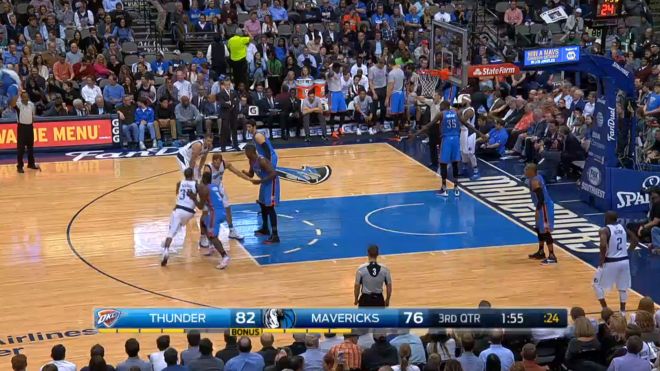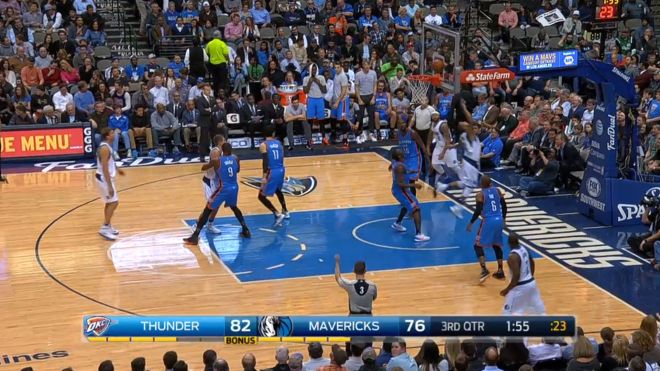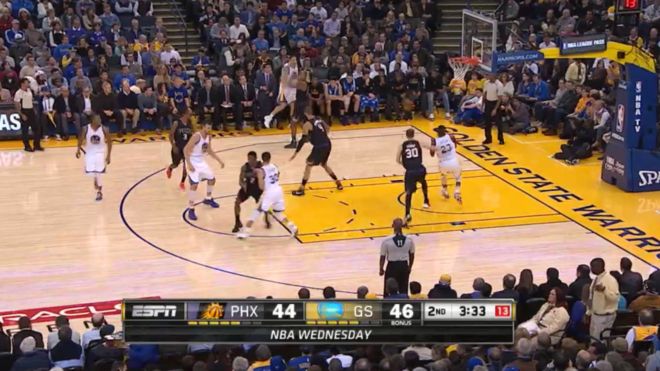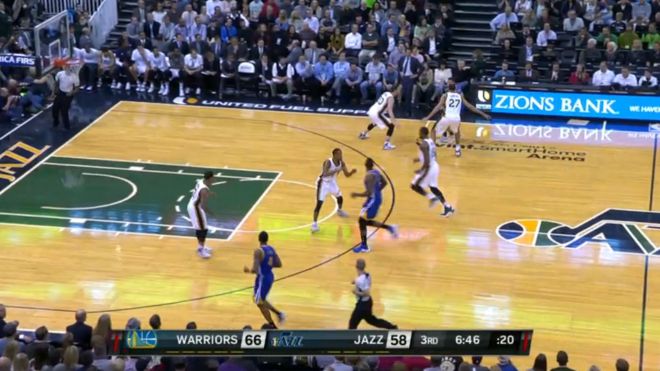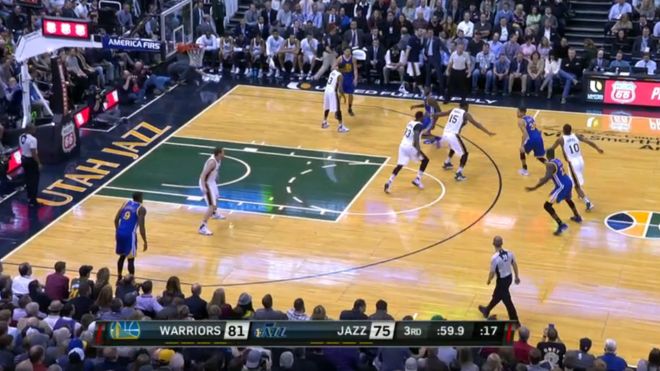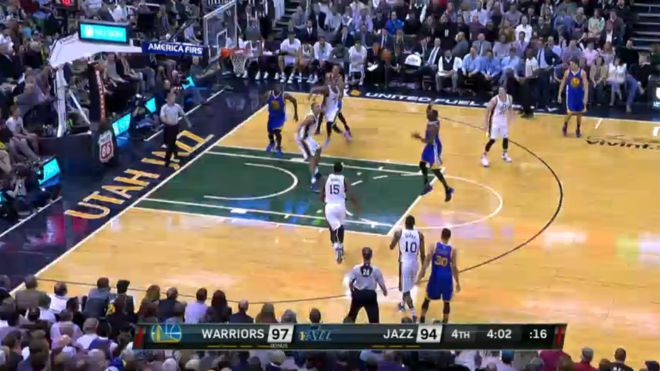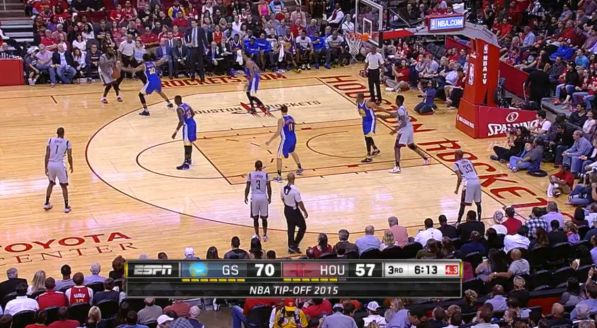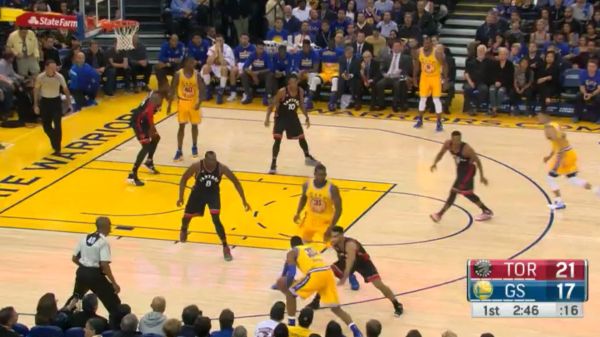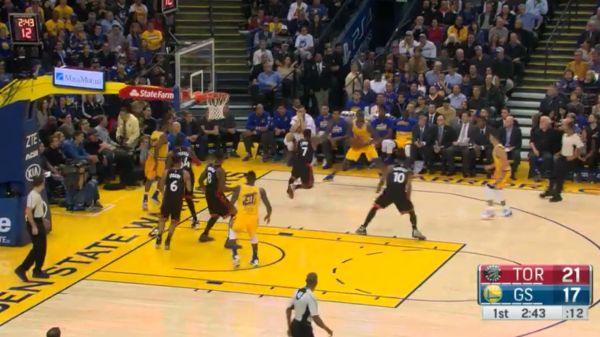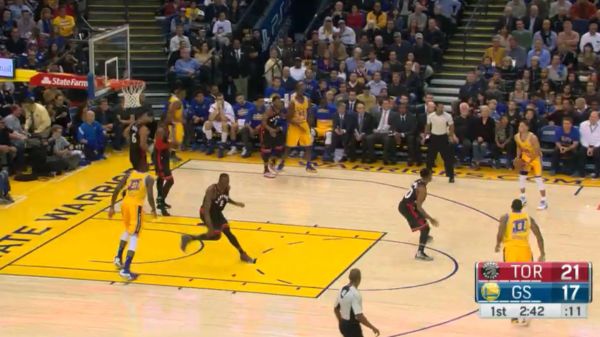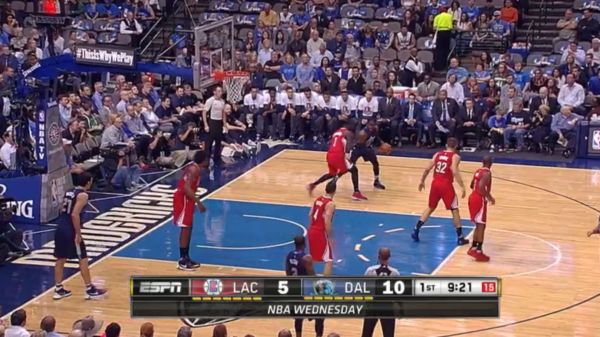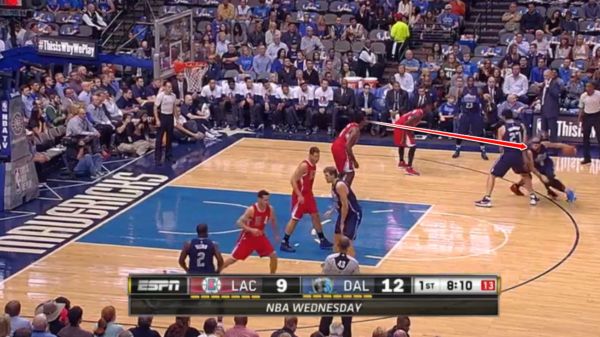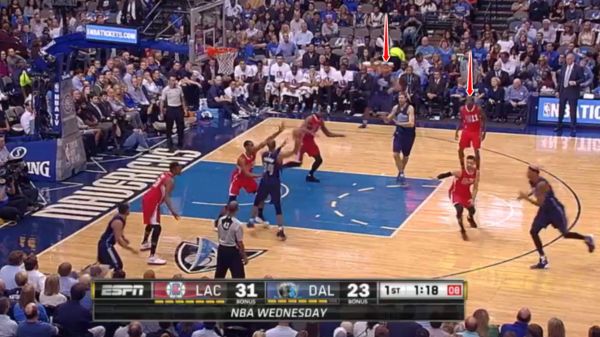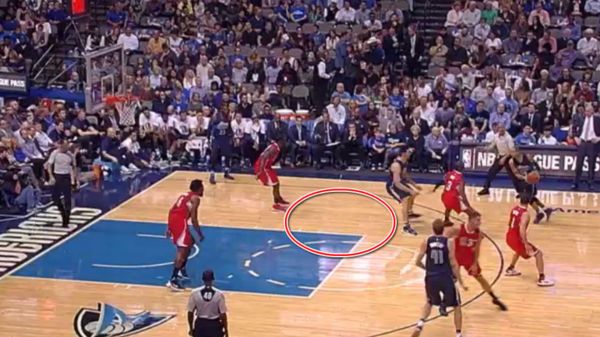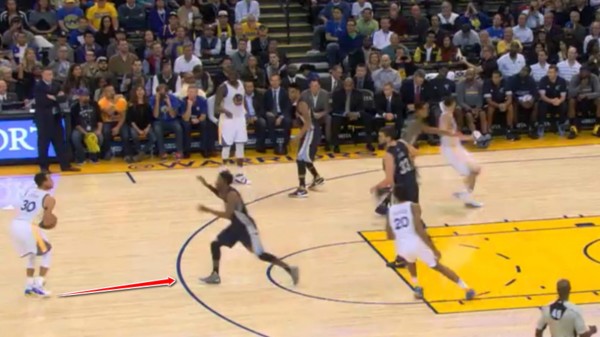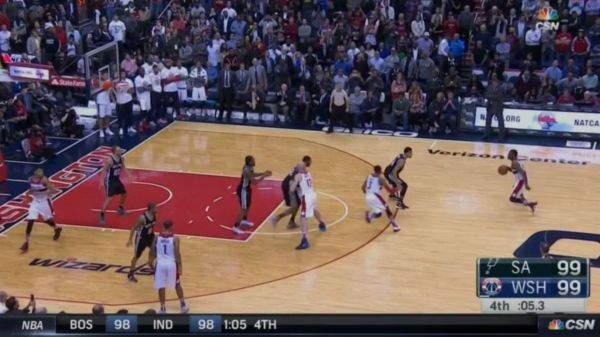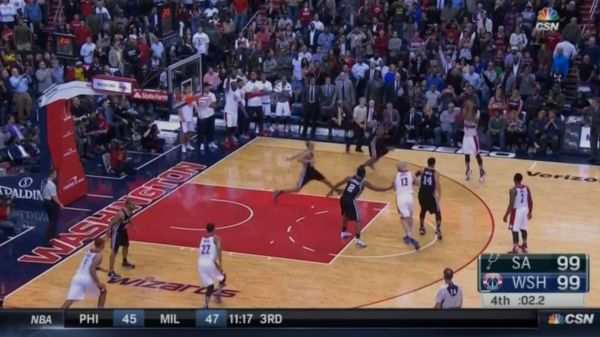Near the end of the third quarter of the Thunder’s victory over the Mavericks on Wednesday, Rick Carlisle put Golden State’s “Elevator” play in reverse on an out-of-bounds that created an open layup for Devin Harris. It wasn’t anything particularly tricky — it was just a savvy play call that manipulated one of the more effective plays in basketball.
Part 1: Set-Up
It’s hard to see exactly how the Mavericks started the play, because both broadcasts returned from a replay after the possession began. Nonetheless, what’s important is that a shooter is standing in the corner on the weak side, while the two big men — Dirk Nowitzki and David Lee — set up at either elbows. Because they are both threats 15-feet from the basket, Enes Kanter and Serge Ibaka can’t just hang around the restricted area.
Devin Harris, who likely started on the weak side baseline near Raymond Felton, then begins to move towards the perimeter as though he’s curling off of a pair of screens to receive the ball on the strong side wing — sort of like “Motion Strong.” Notice, too, how Dion Waiters is trailing Harris on the play, which is just what’s needed for this play to work.
Step 2: Closing Doors
Rather than pop to the perimeter, Harris makes a hard cut towards the center of the basket by running in-between Lee and Nowitzki — just like you’d see from Stephen Curry or Klay Thompson when the Warriors run this play for a 3-pointer on the wing.
Since Kanter and Ibaka are both glued to their assignments, and Dion Waiters is trailing Harris, all Deron Williams has to do is make a pass towards the basket for Harris to get a wide open layup. Somehow, he managed to do it by throwing it between Kevin Durant’s legs.
Step 3: Finish
With nobody in the picture, Harris receives the pass and goes up strong for a layup. Waiters, for some reason, decides to push him in the back, and the Mavericks get a quick three points on a simple out-of-bounds.
While the Mavericks didn’t need any other options, Lee also set a screen on Ibaka for Nowitzki to pop out for a midrange jumper. Ibaka motioned to Kanter to switch assignments, thereby freeing Lee for a cut to the basket. Had Randy Foye been more aggressive with his help, a skip pass to the corner for Felton would’ve open as well.
Here’s a GIF of the end of the play, because — again — the broadcast cut off the start.
